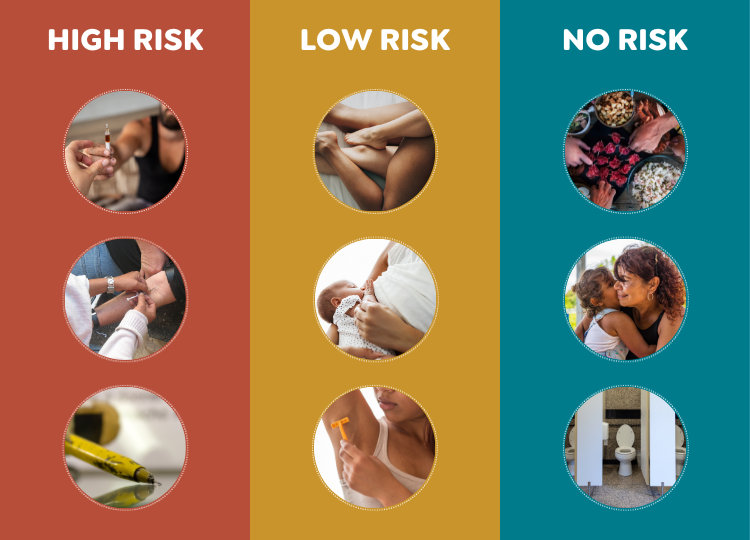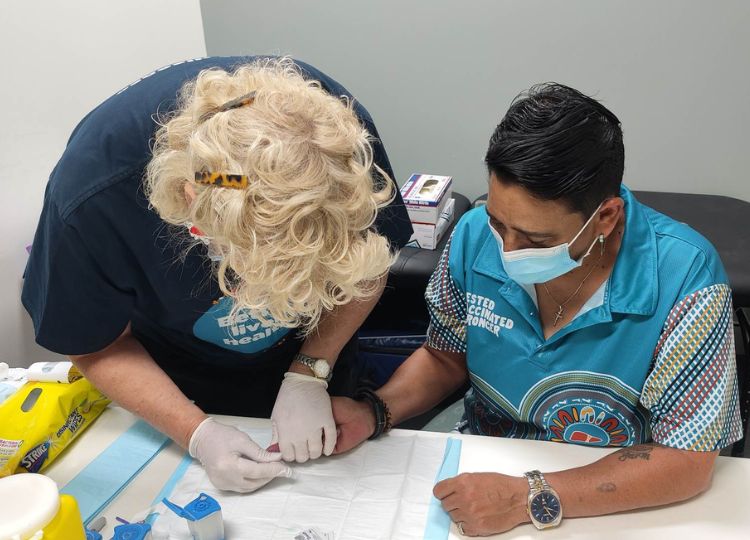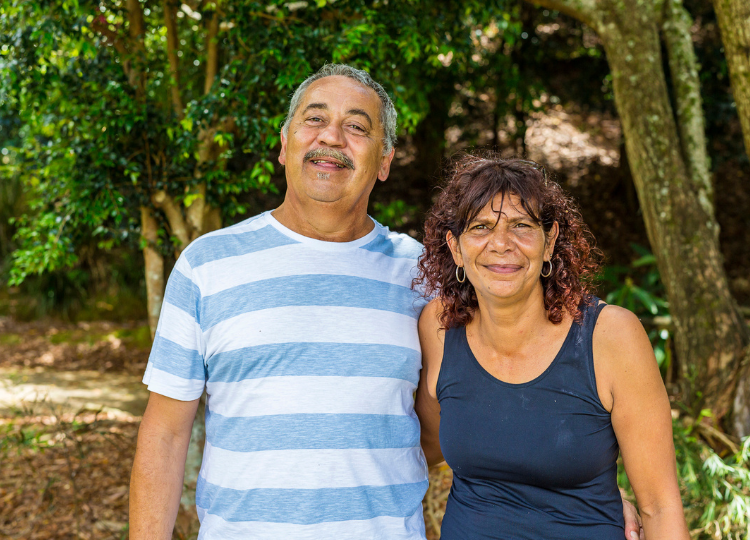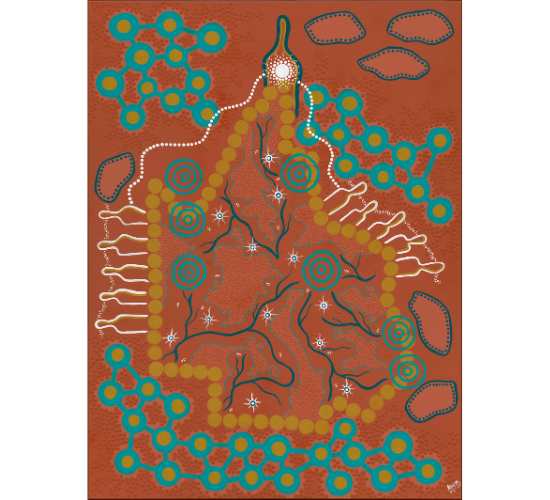High risk
- Sharing needles or injecting equipment
- Being injected by someone else
- Having a tattoo or piercing done by a friend
- Traditional practices or ceremonies

What is hep C?
Hep C is a virus that can make your liver sick.
It can cause inflammation and damage to your liver, and if left unchecked it can cause chronic liver disease and liver cancer.
Hepatitis C is more common among Aboriginal and Torres Strait Islander people with rates up to 5 times higher than non-Indigenous Australians.
The good news is hep C can be cured. Testing and treatment are simple.
Find out more below:

How do you get hep C?
Hep C is spread through blood-to-blood contact.
The only way to know if you have hep C is to get a test.
You can have a:
A finger stick test is a quick and simple test that takes a small amount of blood from your finger and gives you a result in one hour.
A test for hep C isn’t always included in your yearly health check. If you think you might have put yourself at risk, talk to your doctor or health worker about getting tested.


Treatment for hep C is simple.
All doctors can prescribe treatment for hep C. You can access treatment at some Alcohol and Drug Services, Sexual Health Clinics, as well as Aboriginal Medical Services.
Even after we treat and cure hep C it is important to look after your liver health. Liver cancer rates are significantly higher in Aboriginal and Torres Strait Islander communities. More than double the amount of First Nations people are diagnosed with liver cancer compared to non-Indigenous Australians.
You can look after your liver by:


Aboriginal Medical Services across Queensland can provide hepatitis C testing and treatment. The following websites will help you to find your nearest clinic:
You can also access hepatitis B testing and vaccinations at other health services such as your GP or sexual health clinic.
This artwork tells the story of an Aboriginal and Torres Strait Islander Liaison who has shared their story and knowledge of hepatitis C with the team at Hepatitis Queensland. From here, the Hepatitis Queensland team are working to educate and inform Mob across Queensland about hepatitis C.
There are several critical factors to consider when raising awareness about hepatitis C, a significant health issue for Aboriginal and Torres Strait Islander Communities. The health workers who visit or work within Aboriginal and Torres Strait Islander Communities and Health Services must be trained and educated on how to communicate appropriately with Mob. Education about the importance of health checks for Aboriginal and Torres Strait Islander people who live in Communities can lead to greater life expectancy and better health outcomes for the future.
Read more about the different elements used in this artwork


If you’re interested in finding out more or being part of the Hep Check Connect Cure project, contact Lana on 1800 437 222 or lana@hepqld.asn.au.
This website may contain the names and images of Aboriginal and Torres Strait Islander people who have passed on.
CLOSE